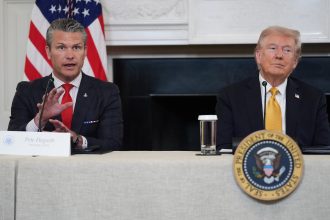While the Sherman tank is at the center of an 80-year-old debate about tank fighting in North Africa, Italy and Western Europe, the contributions of the M4 in the Pacific Theater are frequently overlooked.
Since the M4 was developed as an infantry support tank, with tank fighting being a secondary function, the tactical situation in the PTO appears to be somewhat better suited for the capabilities of the vehicle. Even so, the fanatical efforts of Japanese troops, along with the natural obstacles presented by the island and jungle terrain, stretched the capabilities of the tanks and the ingenuity of the crews to their limits.
Gang Fight in a Phone Booth
U.S. military planners knew that Sherman tanks would have an immediate impact on the battlefield in the Pacific, but before any armored advance could be made the M4s had to reach the beach. On November 20, 1943, the first day of the invasion of Tarawa, Sherman tanks were initially unable to do much of anything as their Landing Craft Mechanized (LCM) were hung up on the coral reef.
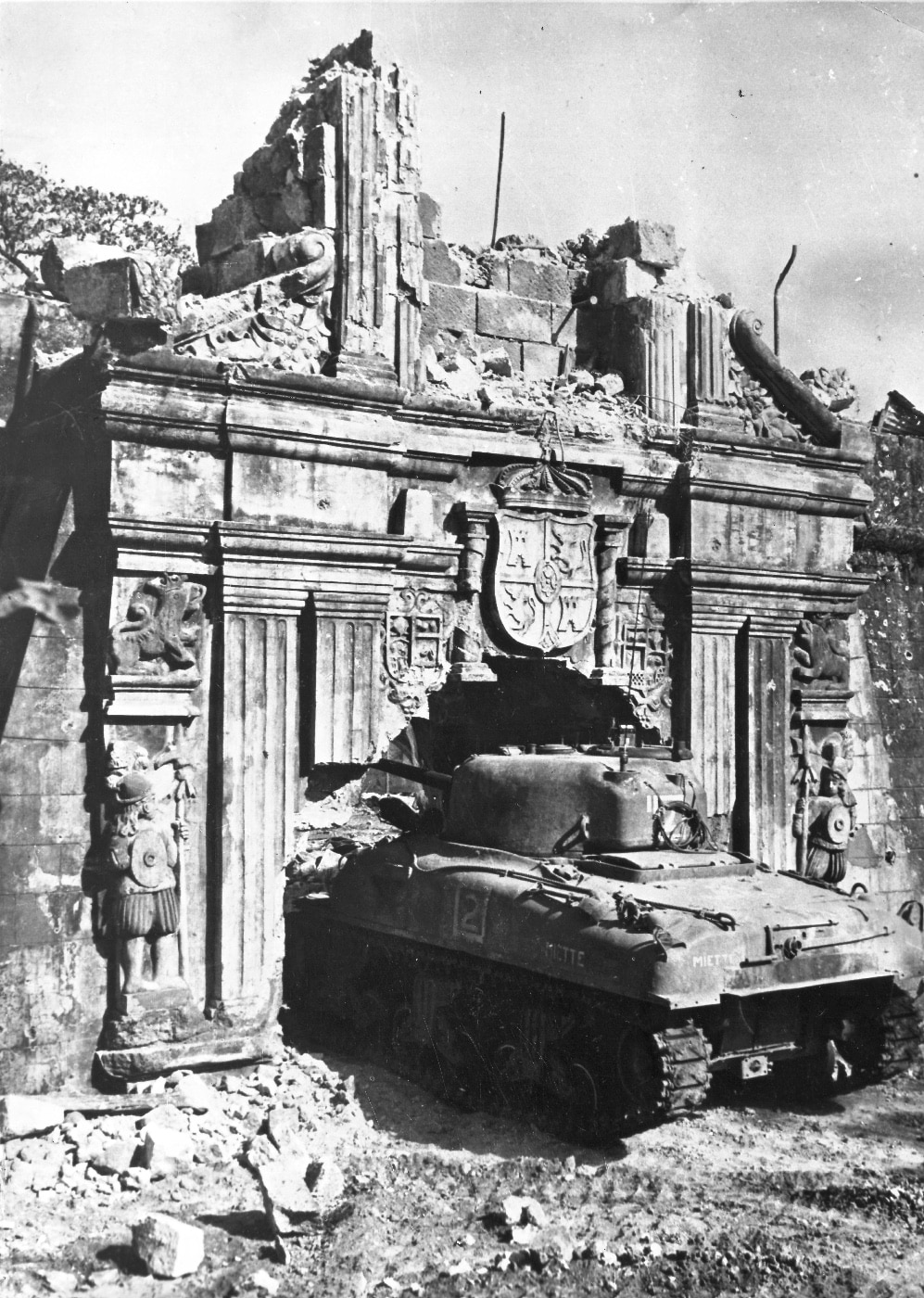
Several LCMs stopped near the reef were redirected to Red Beach 2. Six M4s managed to clamber over the reef and headed towards the beach, guided by Marines in the surf. Unfortunately, several tanks fell into unseen shell holes created by the naval bombardment and were swamped. Three Shermans made it ashore on the western end of the atoll and made their presence felt through the punishing fire of their 75mm guns.
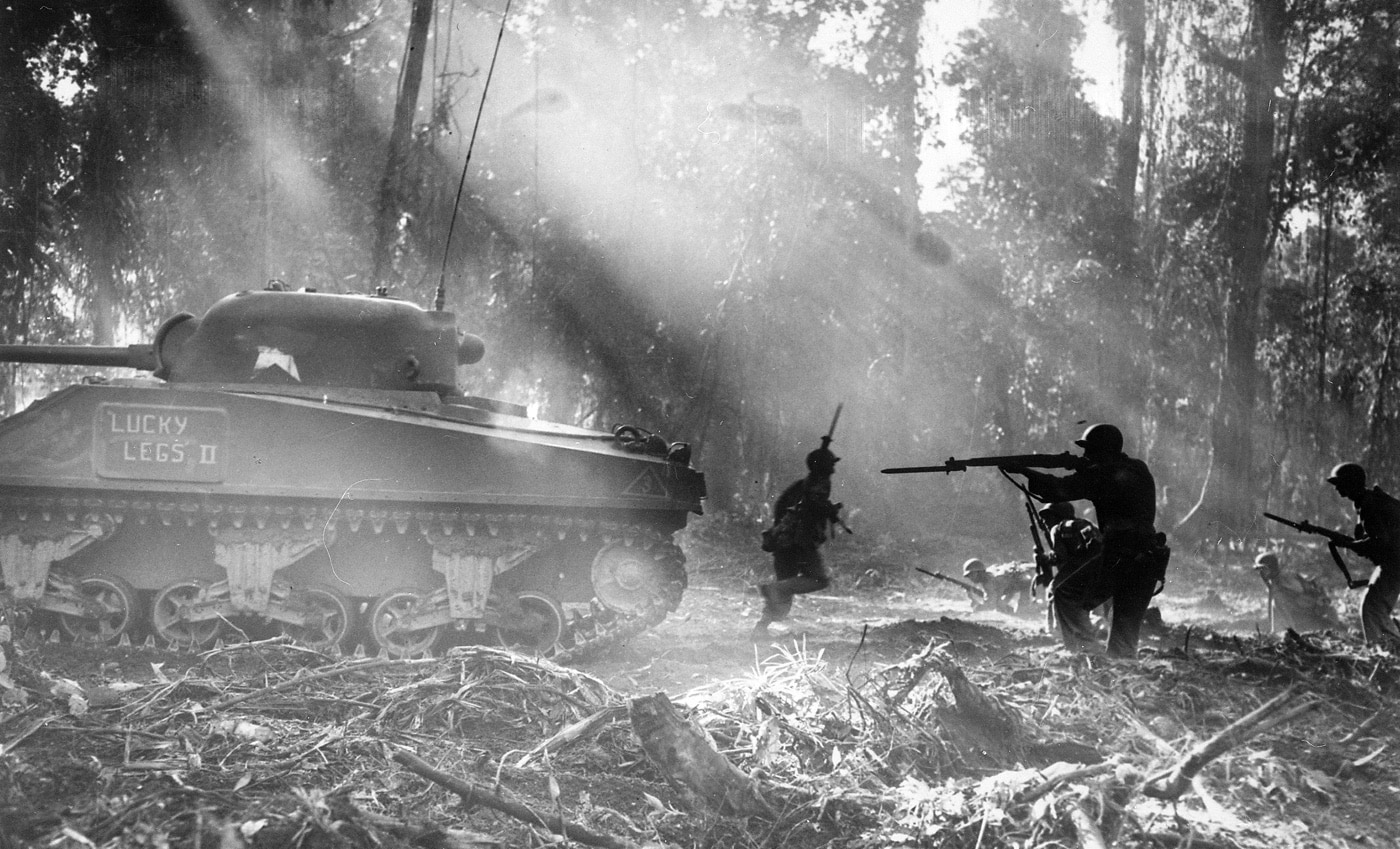
Even so, one was disabled in an anti-tank ditch, one was immobilized by a hand-placed magnetic mine, and the last lost its cannon to a hit from a Japanese field gun. Four M4s at Red Beach 3 also did good work, but by the end of the day only one Sherman was still operational — the rest were immobilized or out of ammunition.

The U.S. intelligence publication “Japanese anti-tank warfare” (June 1945), described some of the early challenges of getting the Shermans onto the beachhead:
“On Tarawa, boat barricades were tactically situated so that they led approaching craft into fire traps, and 37mm anti-tank guns were emplaced on beaches where they could be fired along tank approaches. Although the enemy was trained in laying hasty and deliberate minefields, only scattered mines were encountered offshore. A few ineffective field expedients were found inland.”
The M4s encountered Japanese Type 95 light tanks in their action on Tarawa, and the incredible disparity in the combat capability of the two AFVs was immediately apparent.
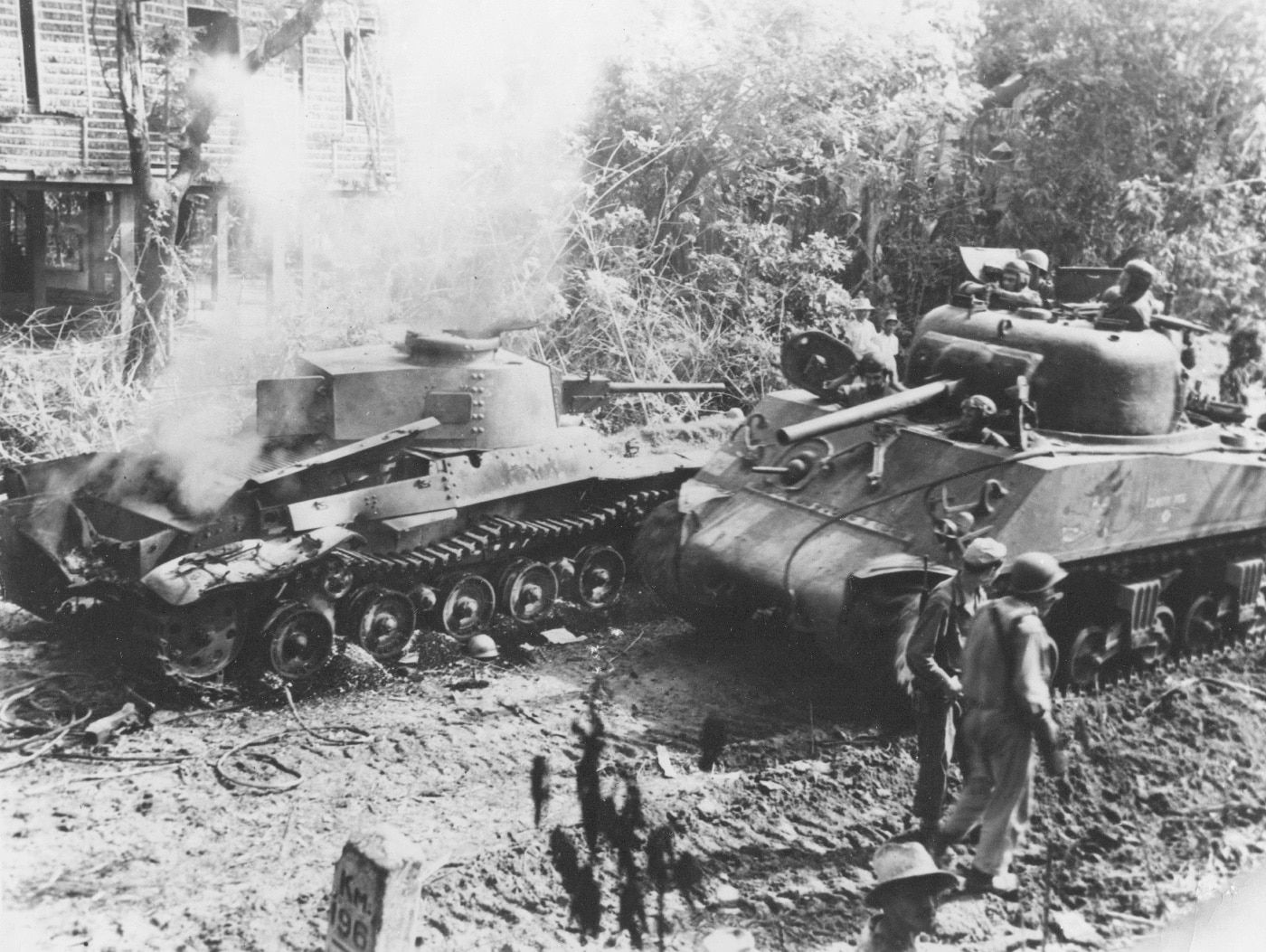
The May 1944 edition of Intelligence Bulletin provides some details:
Japanese tanks on Tarawa: “Flying the Rising Sun flag, the enemy tank approached two U.S.medium tanks, turned while several hundred yards away, turned around again, and fired two rounds while approaching our tanks. Having missed its target, the enemy tank then made an about face and fled. In another engagement, an armor-piercing shell from a U.S. medium tank tore the turret off the top of a Japanese light tank and put it out of action.”
In June 1944, during the Battle of Saipan, the Marine Corps’ Sherman tanks faced Japanese armor in the largest tank battle of the Pacific war. As Japanese Type 95 light tanks and Type 97 Chi-Ha and Type 97 Shinhoto Chi-Ha medium tanks attacked Marine positions in an attempt to drive the Leathernecks into the sea. By the end of the failed assault, more than 30 Japanese tanks were destroyed.
The M4 crews found that the armor-piercing rounds of their 75mm guns passed cleanly through the lightly-armored Japanese tanks — consequently, the Sherman gunners switched to high explosive ammo and blasted the Japanese tanks apart.
Battling the Japanese and the Jungle
During the spring of 1944, Sherman tanks of the 754th Tank Battalion supported the troops of XIV Corps in some of the most inhospitable jungle terrain on Earth — for men and machines alike. The arrival of the American medium tanks in the dense jungle was particularly surprising to the Japanese, and proved a tremendous advantage to U.S. forces, provided a workable path could be found (or made) in the primeval undergrowth.
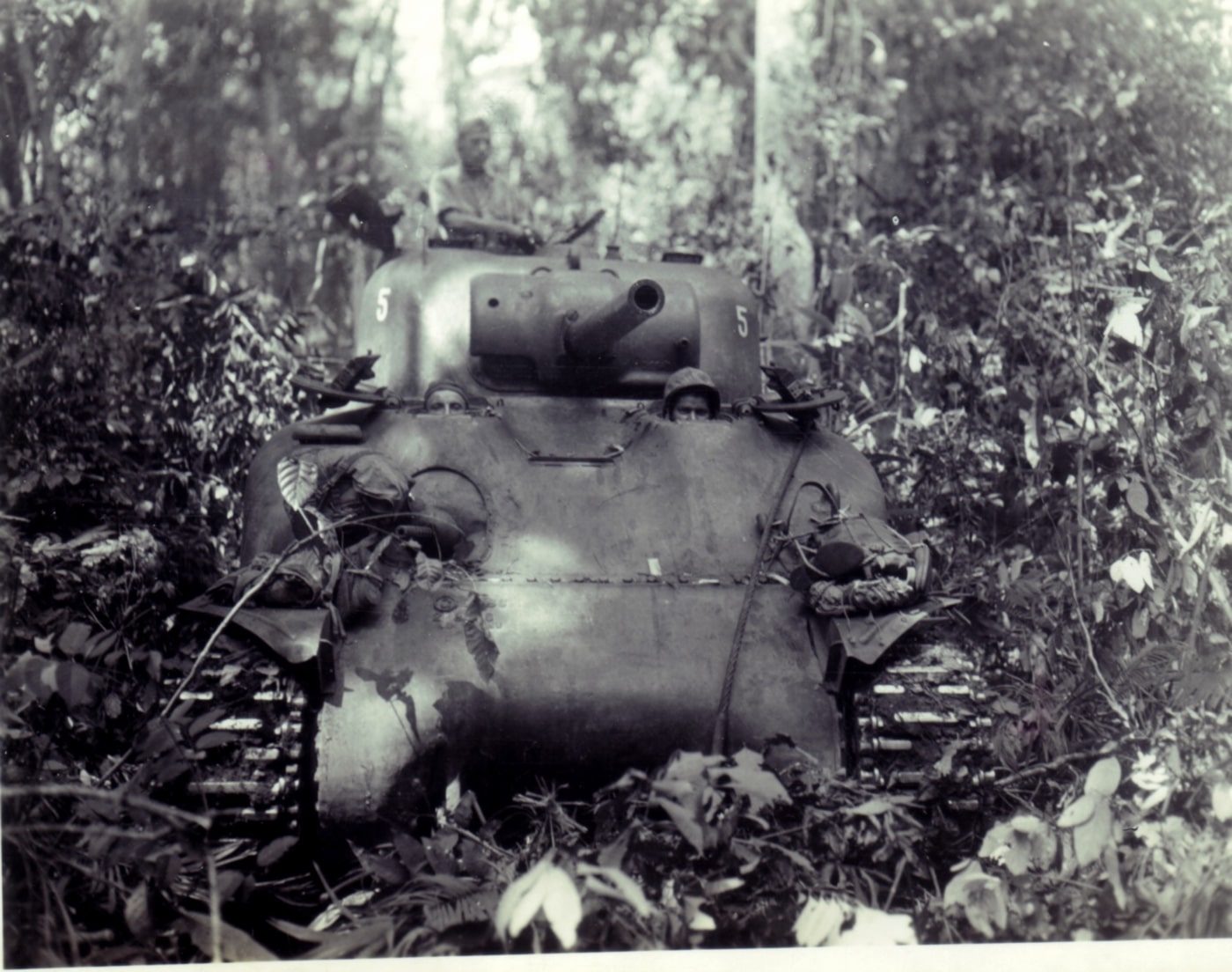
The 754th Tank Battalion’s “Bougainville Report” describes the challenges:
“Tanks were employed against limited objectives normally three hundred yards in depth or less. To give maximum protection to the assault wave of tanks, a second or support wave of tanks was used where possible. Immediately behind the support wave of tanks were ground troops, to designate targets for the tanks, and to help control speed and direction of the Tank-Infantry attack.
It has also been found that in moderately dense jungle, tanks cannot be operated with any degree of success. Their vision ports become fouled with leaves and vines, minimizing the tanks offensive value, while the enemy has every advantage of cover and concealment to close with and damage or destroy the leading wave of tanks.”
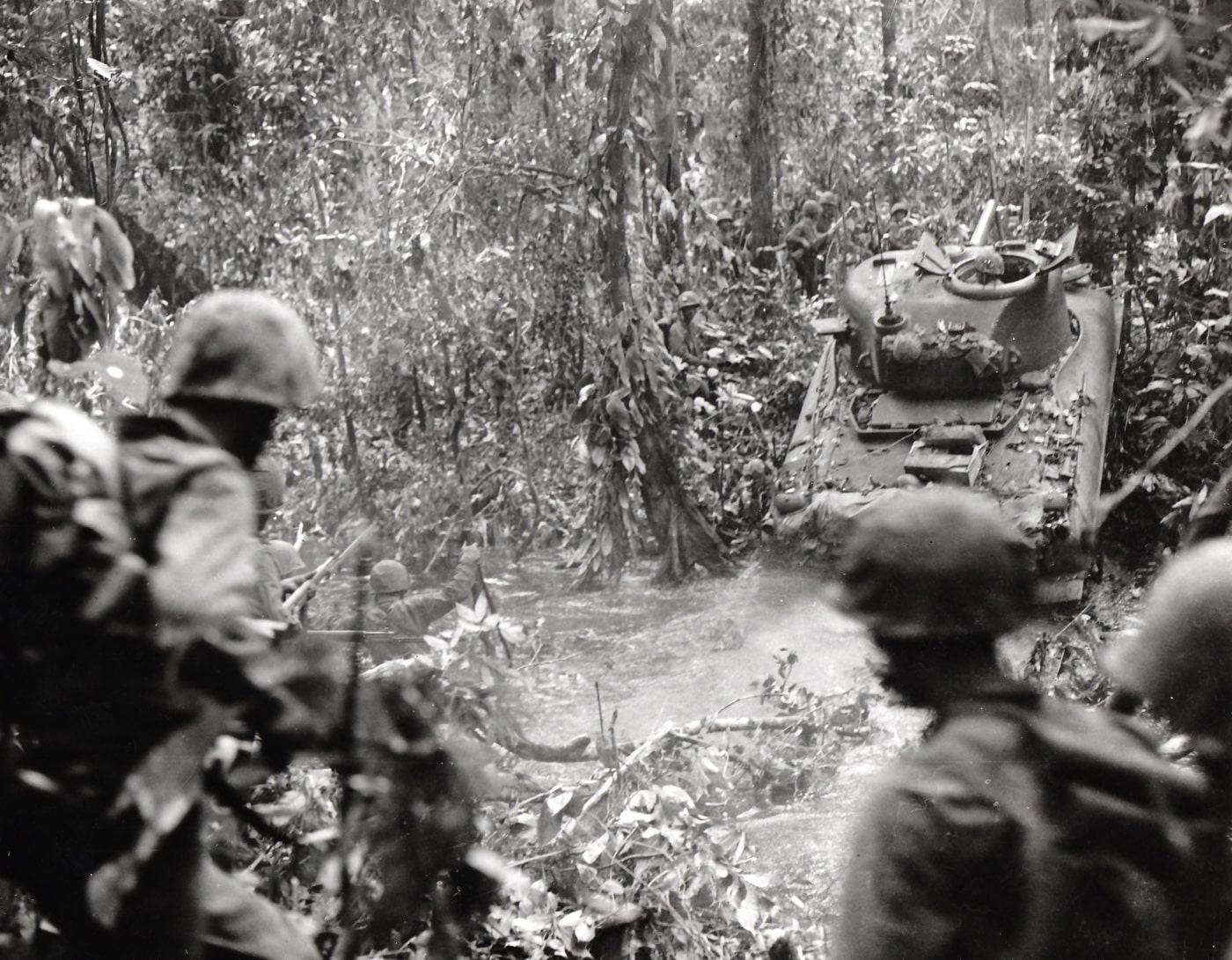
Despite the incredible difficulties presented by the jungle itself, the XIV Corps Report from Bougainville describes the impact of the Sherman tanks in glowing terms:
“The M4 medium tank is almost ideal for jungle warfare. It has the power to crush and penetrate undergrowth. Its size and heavy armor render it almost invulnerable to Japanese AT weapons. No M4 tanks were even damaged by the enemy at Torokina. The 75mm gun of the medium tank is extremely effective against Japanese emplacements. This gun should be supplied with cannister ammunition for the dual purpose of tearing out jungle growth and forcing the enemy underground. The crushing, overwhelming power of the infantry-tank attack, due not only to the ability of armored cannon to destroy enemy machine gun emplacements, but also to the fact that the great volume of fire from tanks keeps enemy infantrymen in their foxholes and enables our soldiers to rush them from close range and kill them where they lie. Thus, the great firepower of tanks is of definite advantage in jungle work.”
Armored Advance Against Japan
As the island-hopping campaign against Japan progressed, so too did the tactics of the all-important tank-infantry team. A subtle but important innovation came during the invasion of Eniwetok in February 1944, with the introduction of the tank/infantry telephone.
“Liaison telephones were developed and installed in boxes at the rear of the tanks for this operation. By using a toggle switch on the box, infantry personnel could signal the tank driver with a blinker light on the dashboard. When the tank came to a halt, the man on foot could coordinate tank and infantry activities through telephone conversation with the tank commander.”

Several U.S.M.C. reports detailed the operations of tank units in the later battles. The development of flamethrower and tank dozer Shermans were particularly important to the Marines’ battle against the Japanese dug into bunkers and caves.
Sherman Flame Tanks
“Mechanized flamethrowers have been employed with considerable success at Saipan, Iwo Jima and Okinawa wherever terrain permitted them to get within firing range of cave entrances. Their large fuel capacity {300-gallons) permits them to give prolonged ‘heat treatment’ that eventually penetrates into virtually every recess. For this reason, the main-armament mechanized flamethrower, E12-7R1, mounting a flame gun in a dummy 75mm gun tube are expected to be at least a partial answer to cave tactics. Auxiliary flame gun tanks, with their flame weapons mounted in the· bow or periscope, are used to supplement the firepower of standard tank units. One modification of the flamethrowing tank, developed by POA-CWS which also led in development of the flame tank itself, has been to attach a 500-foot length of hose to the large fuel container of the tank. The hose, attached to a standard flame gun, is then carried into terrain which the tank cannot penetrate, permitting delivery of a large volume of flame into enemy positions.
“The flamethrower tank gave good service when it could get into position, but it can be considerably improved. It should have a much larger fuel capacity and should have a fuel trailer so that it will not be required to leave the front frequently to go back and refuel. The flamethrower tank broke down frequently due to weak fuel lines and this should be remedied. The rated range was never attained; the distance that flame can be thrown should be doubled.”
Tank Dozer
“The tank dozer has been extremely useful, being able to approach cave entrances which are still defended. The blade mounting does not reduce the effectiveness of the tank, which can still use its weapons, and the blade can be jettisoned within 10 seconds. Anti-tank weapons and mines must be neutralized before the tank dozer can operate in safety.
The dozer tank is not powerful enough to do anything but the simplest dozing jobs, yet was the only dozer available for work under fire. The dozer tank could not push rocks or do much more than move loose earth.”
Marine Tanks on Iwo Jima
In one of the toughest battles in American military history, Iwo Jima, the Sherman tank was locked in combat with a fanatical enemy while at the same time struggling with some of the most rugged terrain on the planet.
“The IWO JIMA operation did not favor the use of tanks. Most of the time their use was extremely limited due to the ruggedness of the terrain and the enemy anti-tank measures, (chiefly mines and tank obstacles). The medium tank was used almost exclusively as an assault gun in destroying enemy pillboxes and blockhouses. The 75mm gun is not large enough nor does it have a high enough velocity to breach heavy concrete emplacements such as were encountered on IWO JIMA. Replacing the 75mm gun with a high velocity 90mm gun is strongly recommended.”
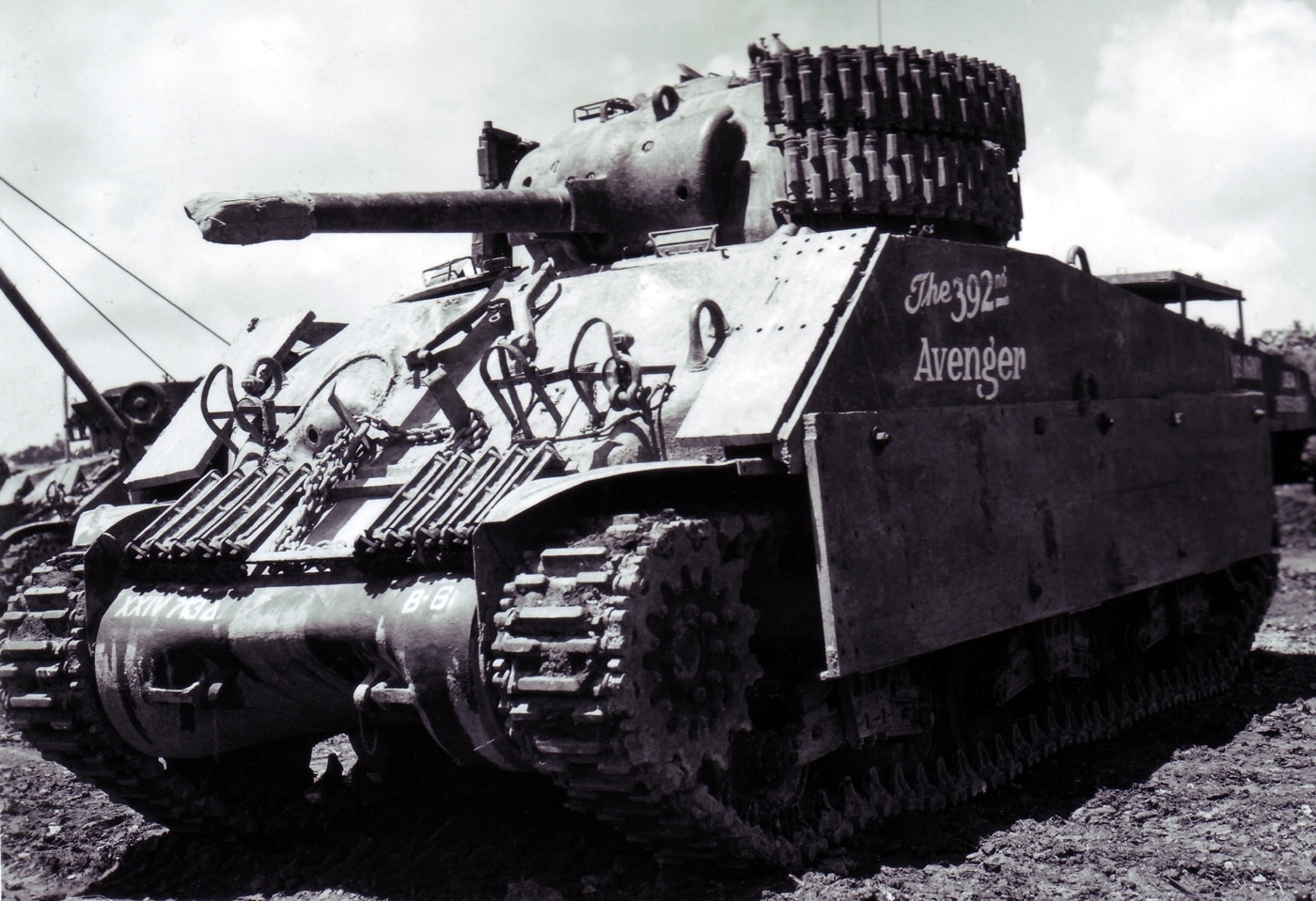
The 5th U.S.M.C. tank battalion records the modifications made to their Sherman tanks to defend against the suicidal Japanese anti-tank teams.
“Marine tankers sprayed sand onto wet paint on their vehicle sides to reduce the ability of Japanese magnetic mines to stick. Other tanks used wooden planks for the same purpose. These were two-by-twelves bolted to the sides of the hull and cut to fit the shape of the sponson. Some Shermans used planks as skirts to protect the suspension system. Track blocks were spot-welded to the turret and the front plate to offer extra protection, while providing a ready source of spare track links in the field.
The planking on the sides of the tanks proved effective against shaped charges thrown at several tanks. While the planking was splintered or blown off entirely, the armor plate beneath was not damaged.
Tankers also welded 16-Penny nails with points up on hatches and periscope covers. This helped keep the Japanese tank assault teams from prying open hatches and ports and provided standoff space to reduce the effectiveness of Japanese hollow charge mines. Steel matting used on forward airfields, cut to the desired shape, was used for this, too. Wire mesh was stretched over other flat surfaces of the tanks, and over the top of the fording adapter. A layer of sandbags often covered the engine compartment, and this saved several engines during the campaign.
No case is recorded in which the wooden skirts for the suspension system saved the tank. But as the Japs have shown considerable reliance on satchel charges thrown under the tank by Jap infantry, the use of such skirts is well advised. The practice of welding spare track blocks on the outside of the turret and on the front slope plate, besides repeatedly providing spare track links when and where needed, upon at least one occasion prevented a 47mm projectile, which hit a track block on a tank turret, from penetrating the armor. The same gun, in the same engagement, hit another tank in approximately the same place, but there was no track block to slow the projectile in this case and it penetrated the turret, exploding inside the tank and causing casualties.”
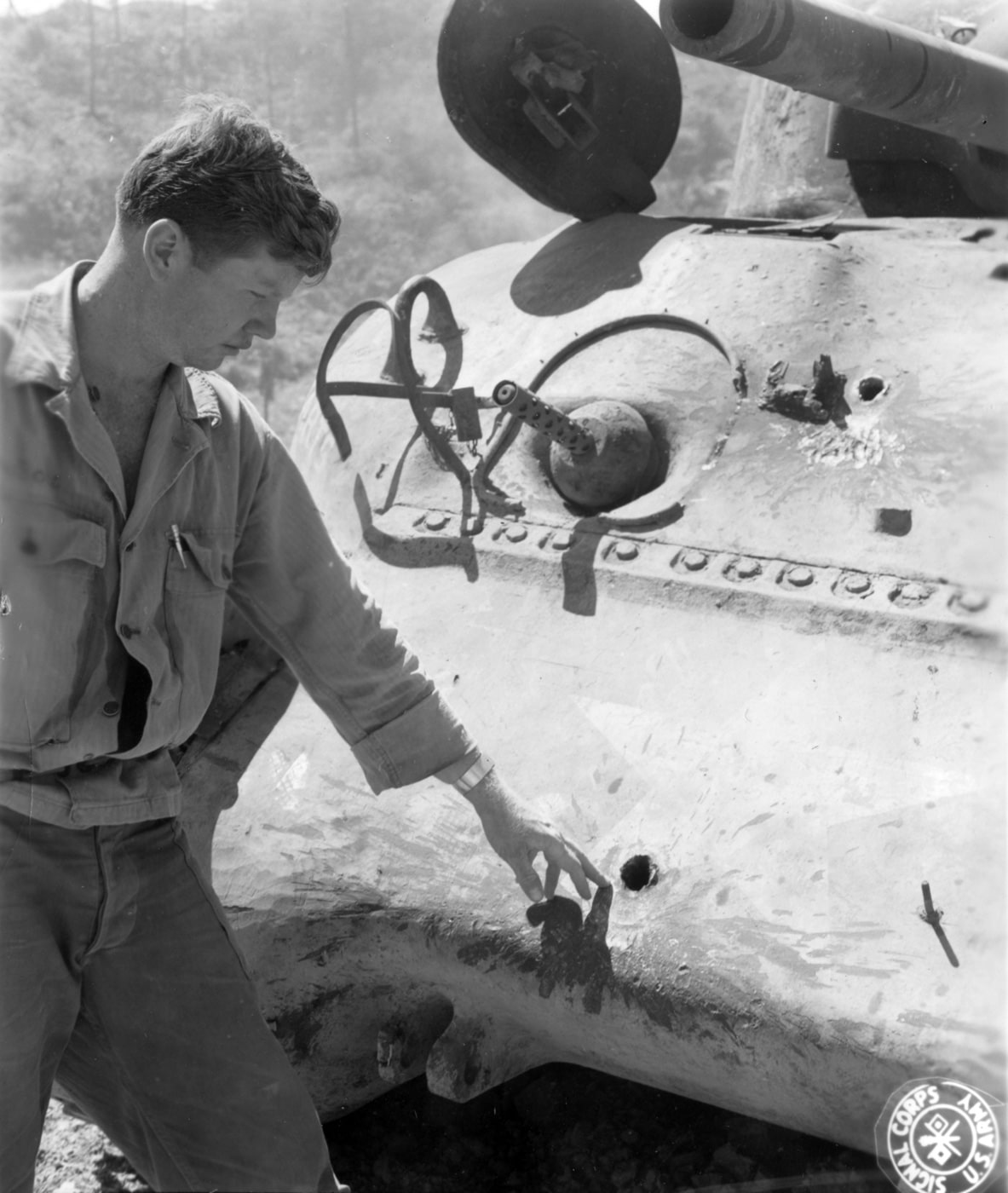
The 5th Tank Battalion’s Iwo Jima report concluded with: “The all-around performance of the M4A3 tank was exceptionally good.”
The Right Tool
Often derided in the ETO as “not good enough”, the Sherman tank was the armored master of the Pacific Theater. While the Japanese had few tanks, and none that came close to matching the M4, their troops would stop at nothing, including self-sacrifice to destroy an American tank and its crew. Japanese anti-tank guns held their fire until the Sherman was on top of them. Men of their tank hunter teams would throw themselves beneath an M4’s thin belly armor and detonate the satchel charge strapped to their backs.

Whatever the situation, whether ETO or PTO, Sherman crews faced the dangers and overcame the enemy. A 1945 U.S. Intelligence report highlighted the Japanese troops desperation to stop the growing number of Sherman tanks they faced — a suicidal approach to tank fighting that would only increase if the Allies invaded the Japanese home islands.
“Increasing emphasis on anti-tank tactics by the Japanese has been noted during recent months in captured documents. The development of close-in attack methods with lunge mines and satchel charges has been the theme of most of these documents, with stress being placed on the necessity of neutralizing or avoiding our supporting infantry when these attacks are made. The increasing effectiveness of Jap anti-tank tactics is shown by our tank losses in the PHILIPPINES and on IWO JIMA.”
Editor’s Note: Please be sure to check out The Armory Life Forum, where you can comment about our daily articles, as well as just talk guns and gear. Click the “Go To Forum Thread” link below to jump in and discuss this article and much more!
Join the Discussion
Read the full article here







